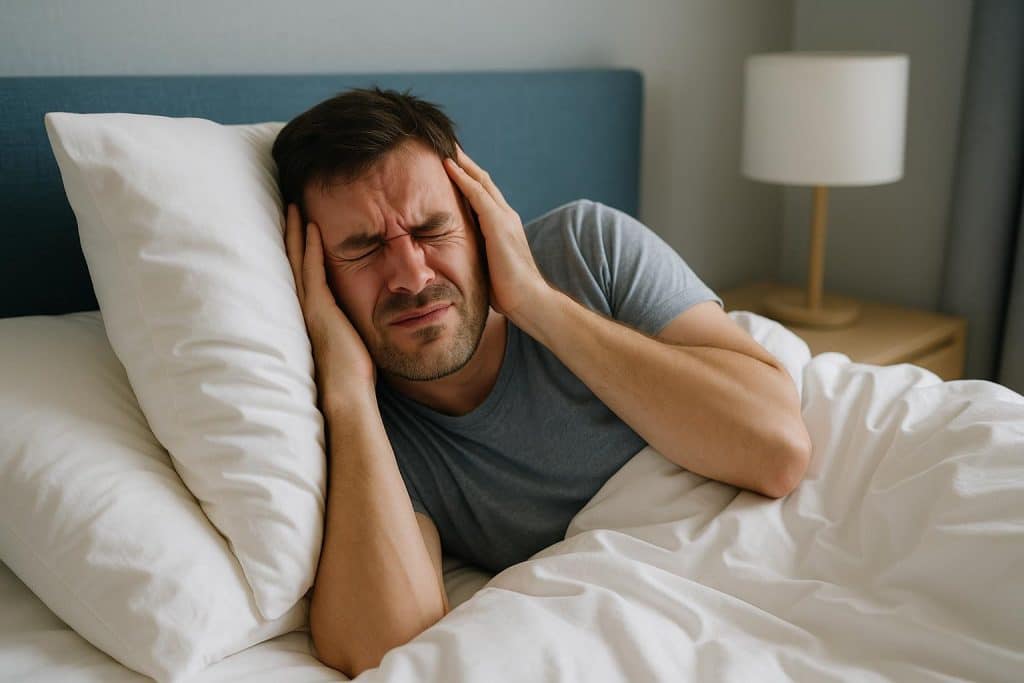If you’re waking up with persistent morning headaches, your pillow might be the culprit you’ve overlooked. While many people invest in quality mattresses, the humble pillow often gets ignored despite playing a crucial role in sleep quality. For those dealing with sleep-related breathing issues, such as sleep apnea, a sleep apnea pillow could be the missing piece of their wellness puzzle.
Morning headaches affect millions of people worldwide, and while there are numerous potential causes, the connection to sleep positioning and breathing quality during the night is often underestimated. When your head and neck aren’t properly supported, it can lead to a cascade of issues that manifest as that familiar throbbing sensation upon waking.
The Anatomy of a Morning Headache
Understanding why you wake up with head pain requires looking at what happens during those eight hours of sleep. Your sleeping position directly impacts blood flow, muscle tension, and most importantly, your airway alignment. Traditional pillows often fail to maintain proper neck alignment, causing your head to tilt at awkward angles throughout the night.
This misalignment doesn’t just affect your neck and shoulders. It can restrict your airway, leading to reduced oxygen flow to the brain. When your brain doesn’t receive adequate oxygen during sleep, it responds with dilated blood vessels – a primary trigger for headache pain. The result? You wake up feeling like you’ve been hit by a truck rather than refreshed from a night’s rest.
Beyond Basic Support
The evolution of pillow technology has brought us far from the days of simple feather-filled sacks. Modern sleep science recognizes that different sleep positions require different support strategies. Side sleepers need different elevation than back sleepers, and those who switch positions throughout the night face unique challenges.
What many don’t realize is that snoring and interrupted breathing patterns during sleep can trigger tension headaches. When your airway becomes partially blocked due to poor positioning, your body works harder to breathe. This extra effort creates tension in the neck and facial muscles that can persist into your waking hours as headache pain.
The Breathing-Headache Connection
Poor nighttime breathing doesn’t just affect those diagnosed with sleep disorders. Many people experience mild breathing disruptions that fly under the radar but still impact sleep quality. These disruptions can cause micro-awakenings throughout the night – brief moments where your brain partially wakes to restore normal breathing. While you might not remember these interruptions, they prevent the deep, restorative sleep your body needs.
The cumulative effect of these breathing interruptions manifests in various ways, with morning headaches being one of the most common symptoms. Other signs include waking with a dry mouth, feeling unrested despite adequate sleep hours, and experiencing brain fog that takes hours to clear.
Making the Right Choice
Selecting the right pillow involves more than picking something soft or firm based on preference. Consider your primary sleep position, any neck or back issues, and whether you or your partner has noticed snoring or breathing irregularities during sleep. The market now offers specialized options such as full-body pillow systems designed to support the entire body in an elevated sleeping position while maintaining optimal head and neck alignment to better keep airways open.
For those experiencing persistent morning headaches, investing in a sleep apnea pillow designed with airway management in mind could provide significant relief. These pillows feature specific contours and support zones that promote better breathing throughout the night, potentially reducing both headache frequency and intensity.
Creating Better Sleep Habits
While the right pillow can make a substantial difference, it’s most effective when combined with good sleep hygiene practices. Maintaining consistent sleep schedules, keeping your bedroom cool and dark, and avoiding screens before bed all contribute to better sleep quality. Additionally, staying hydrated and managing stress levels can help reduce headache susceptibility.
Remember that persistent morning headaches warrant attention. If changing your pillow and improving sleep habits don’t provide relief within a few weeks, it’s worth discussing your symptoms with a healthcare provider. They can help identify whether underlying issues need addressing and guide you toward the most appropriate solutions.
The connection between your pillow and morning headaches might seem simple, but it represents a complex interaction between positioning, breathing, and sleep quality. By understanding this relationship and making informed choices about your sleep setup, you can work toward waking up refreshed rather than reaching for the pain relievers.

